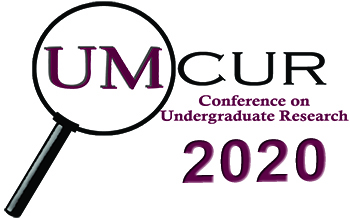Project Type
Poster
Faculty Mentor’s Full Name
Amy Glaspey
Faculty Mentor’s Department
Speech Language Hearing and Occupational Sciences
Abstract / Artist's Statement
Purpose: Normative data are collected from a sample of the population to establish benchmarks for developmental expectations. A developmental timeline for speech sounds has been established using these benchmarks. This timeline is used by speech-language pathologists (SLPs) to determine whether a child’s speech skills are developing in a typical or delayed manner, and is often critical in qualifying a child for speech pathology services. However, for the clinical comparison to be accurate and valid, SLPs should be aware of the demographic and design variables used in each study to determine if the children being tested are fairly represented. Thus, the purpose of this poster is to examine the demographic and design variables used in these baseline studies to support increased validity in clinical decision-making.
Methods: This poster is a descriptive review of six major studies of speech sound acquisition: Glaspey (2019), McLeod and Crowe (2018), Shriberg (1993) and Smit, Hand, Freilinger, Bernthal, and Bird (1990), Templin (1957), and Wellman (1931). These studies were selected based on the frequency of use or the publication date. Eight demographic variables and four design variables were selected for comparison. The similarities and differences across these studies will be presented.
Significance: Speech-language pathologists need to be aware of both demographic and design variables included in normative tests of speech sound disorders to accurately interpret and apply the results. The comparisons in this poster are significant because they highlight the benefits of recent studies that are more demographically representative of today’s population. Furthermore, SLPs can achieve the best clinical results by using the same design components as the normative studies to increase the validity of their assessment practices. The clinical implications of speech-language pathologists’ choice and use of normative studies will be discussed to support evidence-based clinical practice.
Category
Social Sciences
Zoom presentation of poster with audio
Do Studies of Speech Sound Acquisition Accurately Represent all Children? A Comparison of Demographic and Design Variables across Normative Studies.
Purpose: Normative data are collected from a sample of the population to establish benchmarks for developmental expectations. A developmental timeline for speech sounds has been established using these benchmarks. This timeline is used by speech-language pathologists (SLPs) to determine whether a child’s speech skills are developing in a typical or delayed manner, and is often critical in qualifying a child for speech pathology services. However, for the clinical comparison to be accurate and valid, SLPs should be aware of the demographic and design variables used in each study to determine if the children being tested are fairly represented. Thus, the purpose of this poster is to examine the demographic and design variables used in these baseline studies to support increased validity in clinical decision-making.
Methods: This poster is a descriptive review of six major studies of speech sound acquisition: Glaspey (2019), McLeod and Crowe (2018), Shriberg (1993) and Smit, Hand, Freilinger, Bernthal, and Bird (1990), Templin (1957), and Wellman (1931). These studies were selected based on the frequency of use or the publication date. Eight demographic variables and four design variables were selected for comparison. The similarities and differences across these studies will be presented.
Significance: Speech-language pathologists need to be aware of both demographic and design variables included in normative tests of speech sound disorders to accurately interpret and apply the results. The comparisons in this poster are significant because they highlight the benefits of recent studies that are more demographically representative of today’s population. Furthermore, SLPs can achieve the best clinical results by using the same design components as the normative studies to increase the validity of their assessment practices. The clinical implications of speech-language pathologists’ choice and use of normative studies will be discussed to support evidence-based clinical practice.
